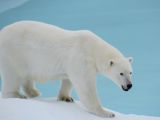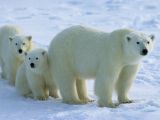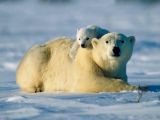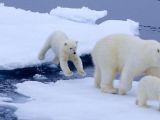A paper published in yesterday's issue of the scientific journal PLOS ONE warns that, as climate change and global warming continue to progress, polar bears populating the Canadian Arctic archipelago will soon have serious trouble finding food.
The report explains that, first off, this means that many of them will run the risk of starving to death. Besides, this predicted food shortage has high chances to bring down reproductive rates. Simply put, female polar bears in the area will deliver fewer cubs.
Polar bears need ice to survive
Wildlife researchers working closely with environmental group the World Wildlife Fund (WWF, for short) explain that polar bears rely on sea ice to find food. Thus, these predators often go on long walks across patches of sea ice in order to find seals.
As detailed in the journal PLOS ONE, sea ice currently persists in the Canadian Arctic archipelago all throughout the year. The trouble is that, under a business-as-usual scenario, this is bound to change by the end of this century.
More precisely, it is said that, unless climate change and global warming are very soon put on a tight leash, some 80% of the sea ice in the Canadian Arctic archipelago stands to break as early as July by the year 2070, the WWF details.
This means that polar bears inhabiting this corner of the world will have far fewer hunting opportunities than they currently do. As a result, they risk suffering from starvation and being unable to raise their young, the green group goes on to detail.
This is all the more worrying given the fact that, according to recent estimates, the Canadian Arctic archipelago currently holds about a quarter of the world's remaining polar bear population. What's more, it is expected that, as a result of these shifts, entire ecosystems will collapse.
“Although this study looked specifically at polar bears, these findings are trouble for all life linked to ice, including the people of the Arctic,” says environmentalist Clive Tesar with the WWF.
There is still time to save these polar bears
Members and supporters of the environmental group say that, if polar bears in this region are to even stand a chance at surviving in the long run, efforts must be made to limit climate change and global warming.
The key to achieving this is phasing out dirty fuels that cough out loads of emissions when burned as an energy source and investing heavily in renewables such as wind and solar, they go on to explain.
Besides, they say that world leaders must see to it that those areas that are likely to retain sea ice even as said phenomena go from bad to worse need be protected as polar bear refuges. One such area that the environmentalists have in mind is a fringe of ice around northern Canada and Greenland, now referred to as the Last Ice Area.
To safeguard this one region and its polar bear population, locals must also be involved in conservation efforts. As Clive Tesar puts it, “We believe local people should take the lead in deciding on the future of this area.”
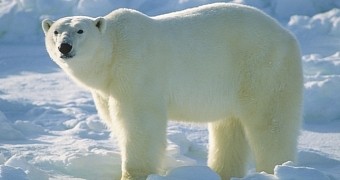
 14 DAY TRIAL //
14 DAY TRIAL // 
